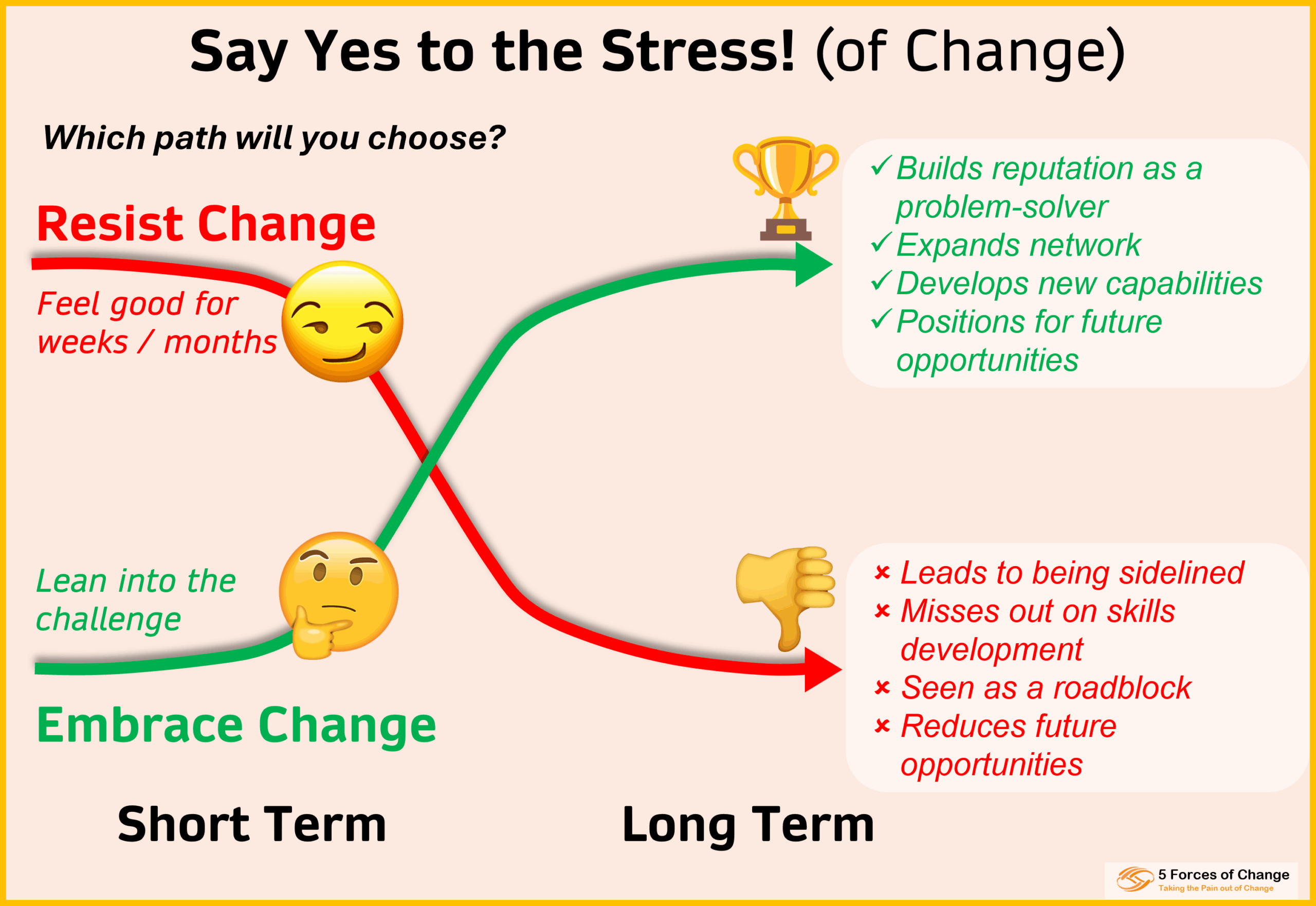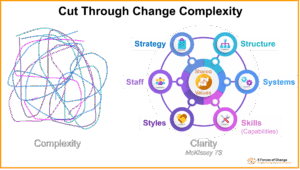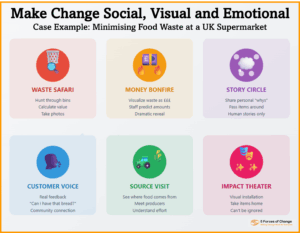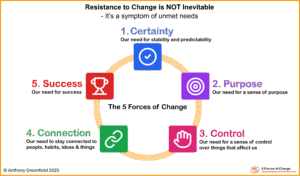As leaders, we often wonder why our teams gravitate toward resisting organisational change. The uncomfortable truth is that resistance offers instant gratification. So how do we help people say yes to the stress of change?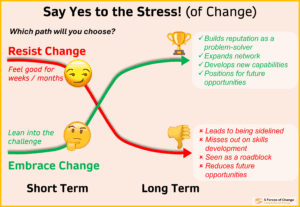
The short-term sugar rush associated with resisting change arises from:
- Camaraderie with fellow resistors
- The satisfying feeling of being “right” about potential problems
- Zero energy expenditure on learning new systems or processes
- Comfortable predictability in an uncertain world
- The moral high ground of pointing out flaws in the plan
But while resistance feels good today, embracing change pays dividends tomorrow.
TURN SHORT-TERM PAIN INTO LONG-TERM GAIN
A leader we can help people reframe their short-term concerns into long-term opportunities – for instance:
“I don’t understand the vision” → Reframe as: “This is my chance to build relationships with senior leadership by seeking clarity directly from decision-makers.”
“Nobody consulted me” → Reframe as: “This is an opportunity for me to step up, get involved, and expand my influence across the organisation.”⁉️
“It’s the uncertainty I can’t stand” → Reframe as: “If I lean into the change, I can build certainty and ensure I’m part of the future.”⚖️
“If it isn’t broken why fix it?” → Reframe as: “I need to understand the external factors driving this change so I can feel motivated to adapt and stay competitive.”⛓️
“I can’t keep up with all this change.” → Reframe as: “I’ve learned countless new things in the past. I will use the available training to master these new methods.”
THE LEADER’S ROLE: CHOICE ARCHITECTURE
Our job isn’t to eliminate the appeal of resistance—it’s to help our teams make informed choices by clearly presenting both paths:
- Resist Change: Feels great for weeks or months, but leads to being sidelined, missing skill development opportunities, and being seen as someone who adds friction during critical times.
- Embrace Change: Uncomfortable initially but builds reputation as someone who adds value when it counts, expands networks, develops new capabilities, and positions them for future opportunities.
TRY THIS WITH YOUR TEAM
“I know resistance feels good right now, and that’s completely normal. But you have a choice about which version of yourself you want to be six months from now. Someone who was proven right about the problems, or someone who was part of the solution?” Say Yes to the Stress! (of Change).
Remember: people don’t resist change because they’re difficult. They resist it because the short-term benefits are real and immediate, while the long-term benefits require faith and effort.
Your role is helping them see both sides of that equation.
If leaders put people at the centre of change and help employees to make a rational choice to reject short-term resistance in favour of long-term benefits then everyone joins forces to make a success of change. Say Yes to the Stress!

